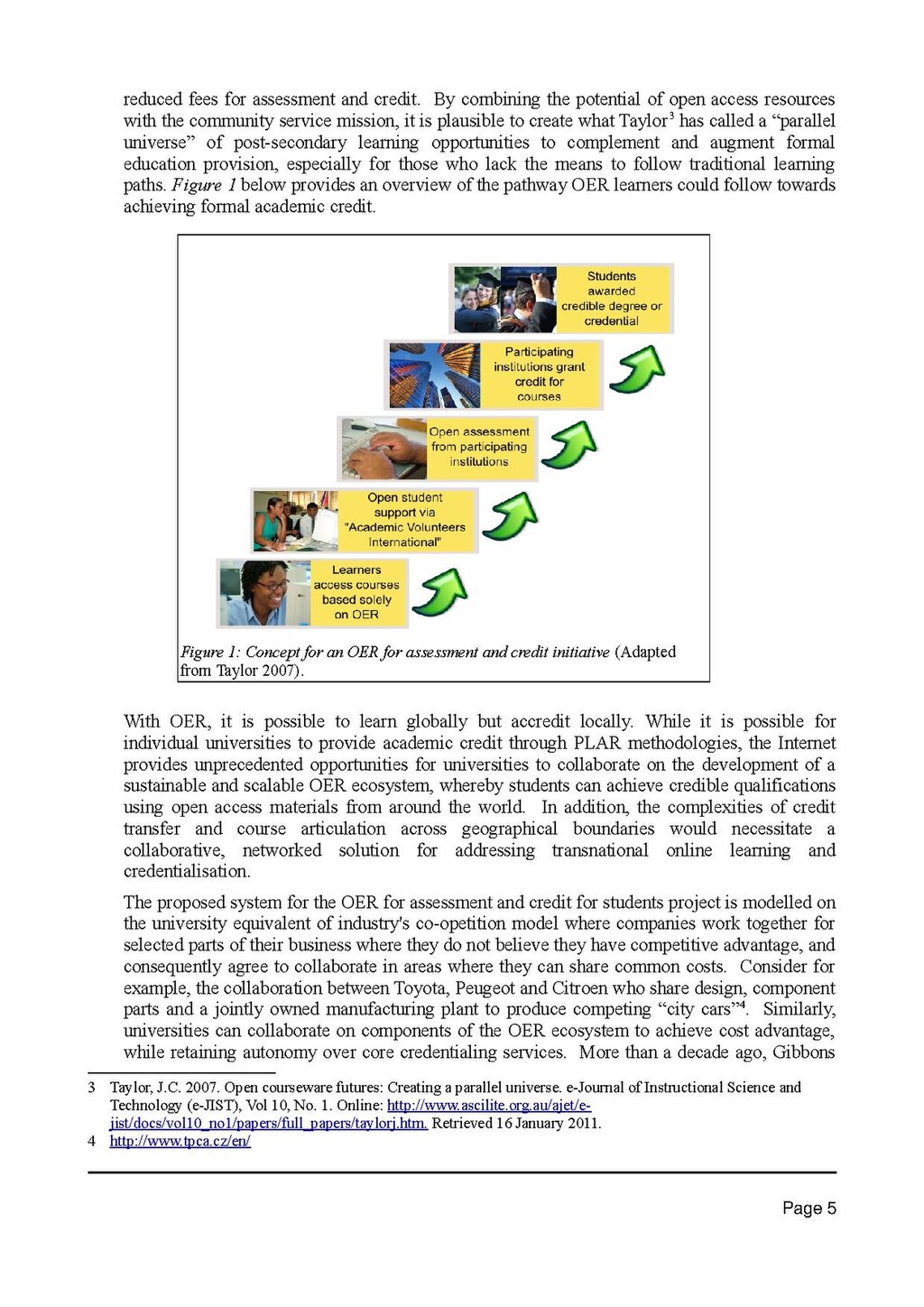reduced fees for assessment and credit. By combining the potential of open access resources with the community service mission, it is plausible to create what Taylor[1] has called a "parallel universe" of post-secondary learning opportunities to complement and augment formal education provision, especially for those who lack the means to follow traditional learning paths. Figure 1 below provides an overview of the pathway OER learners could follow towards achieving formal academic credit.
Figure 1: Concept for an OER for assessment and credit initiative (Adapted from Taylor 2007).
With OER, it is possible to learn globally but accredit locally. While it is possible for individual universities to provide academic credit through PLAR methodologies, the Internet provides unprecedented opportunities for universities to collaborate on the development of a sustainable and scalable OER ecosystem, whereby students can achieve credible qualifications using open access materials from around the world. In addition, the complexities of credit transfer and course articulation across geographical boundaries would necessitate a collaborative, networked solution for addressing transnational online learning and credentialisation.
The proposed system for the OER for assessment and credit for students project is modelled on the university equivalent of industry's co-opetition model where companies work together for selected parts of their business where they do not believe they have competitive advantage, and consequently agree to collaborate in areas where they can share common costs. Consider for example, the collaboration between Toyota, Peugeot and Citroen who share design, component parts and a jointly owned manufacturing plant to produce competing "city cars"[2]. Similarly, universities can collaborate on components of the OER ecosystem to achieve cost advantage, while retaining autonomy over core credentialing services. More than a decade ago, Gibbons
- ↑ Taylor, J.C. 2007. Open courseware futures: Creating a parallel universe. e-Journal of Instructional Science and Technology (e-JIST), Vol 10, No. 1. Online: http://www.ascilite.org.au/ajet/e-jist/docs/vo110_no1/papers/full_papers/taylorj.htm. Retrieved 16 January 2011.
- ↑ http://www.tpca.cz/en/

